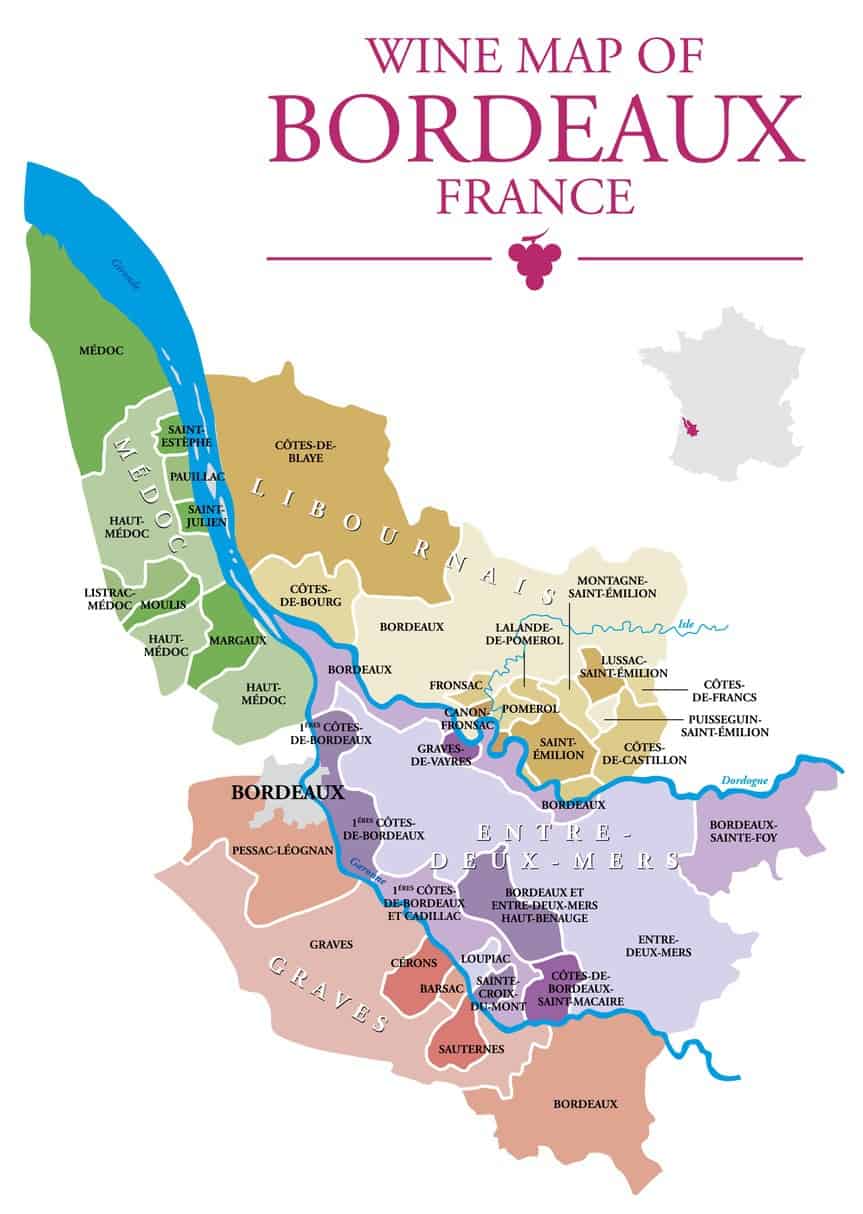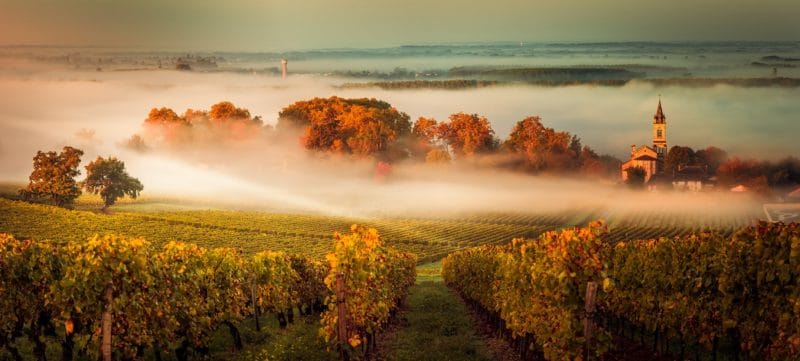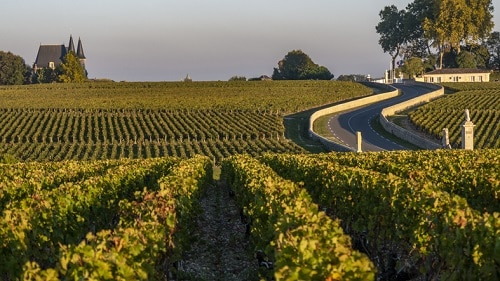Discover Bordeaux
Last Updated on September 27, 2023.
Bordeaux is a giant – the giant – of the fine wine world. It’s home to many of the wine world’s most famous producers: Petrus, Margaux, Latour, Mouton Rothschild, Lafite Rothschild and Haut-Brion to name a just a few. The latter two were Thomas Jefferson favorites. The former American president toured the region and ordered bottles from the properties directly.
Given the size of Bordeaux’s total production – greater than the whole country of South Africa’s – there’s also a lot more to explore beyond the big names. And plenty of it is great value.
Bordeaux’s Grape Varieties and Wine Styles
Red Wines
Bordeaux produces Red, White and Rosé wines, as well as Sweet and Sparkling styles.
Most of it – around 90% – is dry and red. Merlot is the most planted grape, but it’s normally blended with Cabernet Sauvignon, especially in the more prestigious estates of the Left Bank. Some producers also add small quantities of Cabernet Franc and Petit Verdot. Other red varieties such as Malbec are permitted but rarely used. The best examples are matured in new oak barrels and aren’t bottled until around 18 months after harvest.
White Wines & Rosé
A smaller, often overlooked quantity of dry white wine is also made. Sauvignon Blanc and Semillon are planted in roughly equal quantities, with a small amount of Muscadelle. Entry level bottles are fresh, fruity and should be consumed while young. Some top producers use oak to make white wine that can be aged for many years. They often command higher prices than their red counterparts, likely owing to tiny production volumes.
An even smaller volume of Rosé Wine is produced in various parts of the region.
RELATED: 30 Top Wineries and Vineyards in Bordeaux You Must Visit
The Sweet Wines of Bordeaux
A small but significant amount of sweet white wine is produced, most famously in Sauternes and Barsac. Noble rot in autumn causes the grapes to shrivel on the vines and develop a complex flavor profile with characteristics like marmalade, honeysuckle and butterscotch. These are among the most expensive to produce, but waning interest in sweet wine has allowed prices to flat-line; good news for sweet-toothed drinkers.
Sparkling Wines
Crémant de Bordeaux is the name given to the region’s White and Rosé Sparkling Wines, made in the traditional method (the same method that is used in Champagne).
Key Sub-Regions in Bordeaux
Left Bank – west of the Gironde river
The Medoc, north of the city of Bordeaux, contains four of the region’s most important communes for red wine: St. Estephe, Pauillac, St. Julien and Margaux. These are home to the estates that were included in the region’s famous 1855 Classification, which divided 58 of the most prestigious properties into five groups, from First to Fifth Growth, based on price. The classification is still used to this day, with only minor changes in over 150 years.
The Graves region surrounds and stretches south of Bordeaux city. Its most prestigious estates are located in Pessac-Leognan, the most northern commune in Graves. This is where Chateau Haut-Brion can be found: the only estate outside of the Medoc that was classified in 1855 as a First Growth.
Sauternes and Barsac, the most important appellations for sweet wine production, are further south.
Entre-Deux-Mers – between the Garonne and Dordogne rivers
This large area contains a number of appellations that produce wine of variable quality, at much more modest price points than its famous neighbors. Bottles from good producers in this region can offer excellent value, particularly from the best Bordeaux vintages. Recently, these include 2018, 2016 and 2015.
The red wines are likely to contain a high proportion of Merlot and most are intended to be drunk within a few years of bottling. Plenty of good quality White, Rosé and Crémant also comes from the Entre-Deux-Mers.
The Right Bank – East of the Gironde river
The Right Bank is home to several important appellations, most notably Pomerol and St. Emilion. Both areas are planted with a higher proportion of Merlot, which grows well in the predominantly clay-based soils, than within the Medoc communes.
A number of famous Pomerol wines, such as Petrus, are made with 100% Merlot. These are generally made in much smaller quantities than the wines of the Left Bank, from more modest-looking estates; though they are able to command some of the highest prices in the whole of Bordeaux.
The pretty town of St. Emilion is surrounded by vineyards which are part of the appellation of the same name. It’s home to several important estates like Ausone and Angelus. Unusually for Bordeaux, some estates such as Cheval Blanc and Figeac use a high proportion of fragrant Cabernet Franc in their blends.
Interested in visiting Bordeaux soon? Take a look at some of our itineraries and producers worth visiting below.
Written By Sarah Phillips
Sarah Phillips is a Miami-based marketer and wine educator. After spending nearly five years working in the London wine trade, she relocated to Miami in January 2019. Sarah has her WSET Diploma (Level 4 Certified) and teaches classes with a focus on the wines of France, Spain, Portugal and Italy at the Florida Wine Academy.



[…] Regional overview: Bordeaux […]